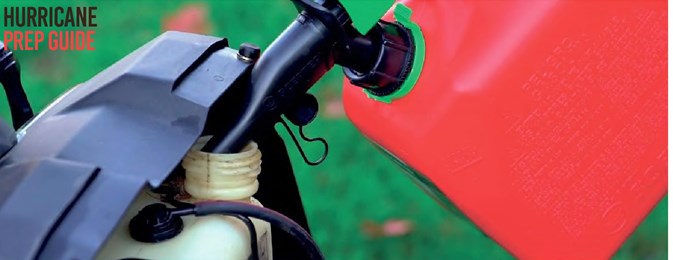(StatePoint) – From landscaping, to tending the lawn and garden to getting your family’s recreational equipment prepped for weather, the common denominator is that these activities require fuel to get going.
Now is the ideal time of year to make sure equipment is properly fueled, and fuel storage containers are in tip-top shape.
“Whether it’s using a tiller to start a garden or preparing the family boat for the first fishing trip of the year, consumers rely on fuel to jumpstart seasonal activities,” says Daniel Marshall, vice president of marketing and business development with Scepter, a manufacturer of North American-made fuel containers. “Gasoline, kerosene and diesel fuel all link people to projects and activities outside the home. It’s important to prepare and use fuel containers both safely and smartly.”
Here are some things to keep in mind, according to Marshall:
Getting Started
There’s nothing more annoying than preparing to cut the lawn and finding there’s no gas in the mower and your gas can is empty. If you happen to make this discovery when prepping for a storm or other emergency, this situation goes from irritating to distressing. Monitor your at-home fuel supply so you’re never caught empty-handed.
When taking inventory of supplies, consider the age of your fuel. Safely discard older fuel that’s been sitting unused for many months, as gas components can deteriorate over time. You can better track this by labeling containers.
Remember, the fuel you used for winter chores was probably a unique “winter mix”
blend. For warm weather chores, get a new “summer mix.” Changing fuel seasonally will mean better performance of equipment and help guarantee a fresh supply.
Easy Does
It Proper fuel storage can help you complete chores quickly, safely and efficiently. The key is selecting containers that provide clean, fast and hassle-free pours, such as SmartControl fuel containers from Scepter.
Made of high-density polyethylene for rugged durability, these 1-, 2- and 5-gallon containers, available for gasoline, diesel and kerosene, feature an innovative spout design that eliminates spills. The user-controlled flow valve makes it easy to direct the amount of fuel being dispensed, and because the container stores with the spout on, hands stay clean.
Always be Safe
To protect your household, replace old, rusty and leaking metal fuel containers with models boasting the latest safety standards, including flame mitigation devices (FMDs), as well as child safety caps on the spout, as mandated by current law. Then, store containers in se cure, dry locations away from heat sources, pets and children.
“Your best bet is to look at every safety feature when purchasing a new fuel container, ensuring it meets or exceeds industry standards and definitely has an FMD,” says Marshall.
Safe use of fuel is also essential. Never use your fuel container around fire pits, burn piles, barbeques, the fireplace, fire embers or other sources of ignition. Gasoline should never be confused with lighter fluid. One reason this is so dangerous, is that when you use gas or other fuels, heavy unseen vapors will surround you as you pour. If this happens near any type of fire or source of ignition, these vapors can explode, which will likely result in serious injury or worse to you or those around you.
Be smart and use fuel for equipment only.
This summer, be sure to fuel your household’s chores and recreational activities as safely, cleanly and efficiently as possible.













No Comment